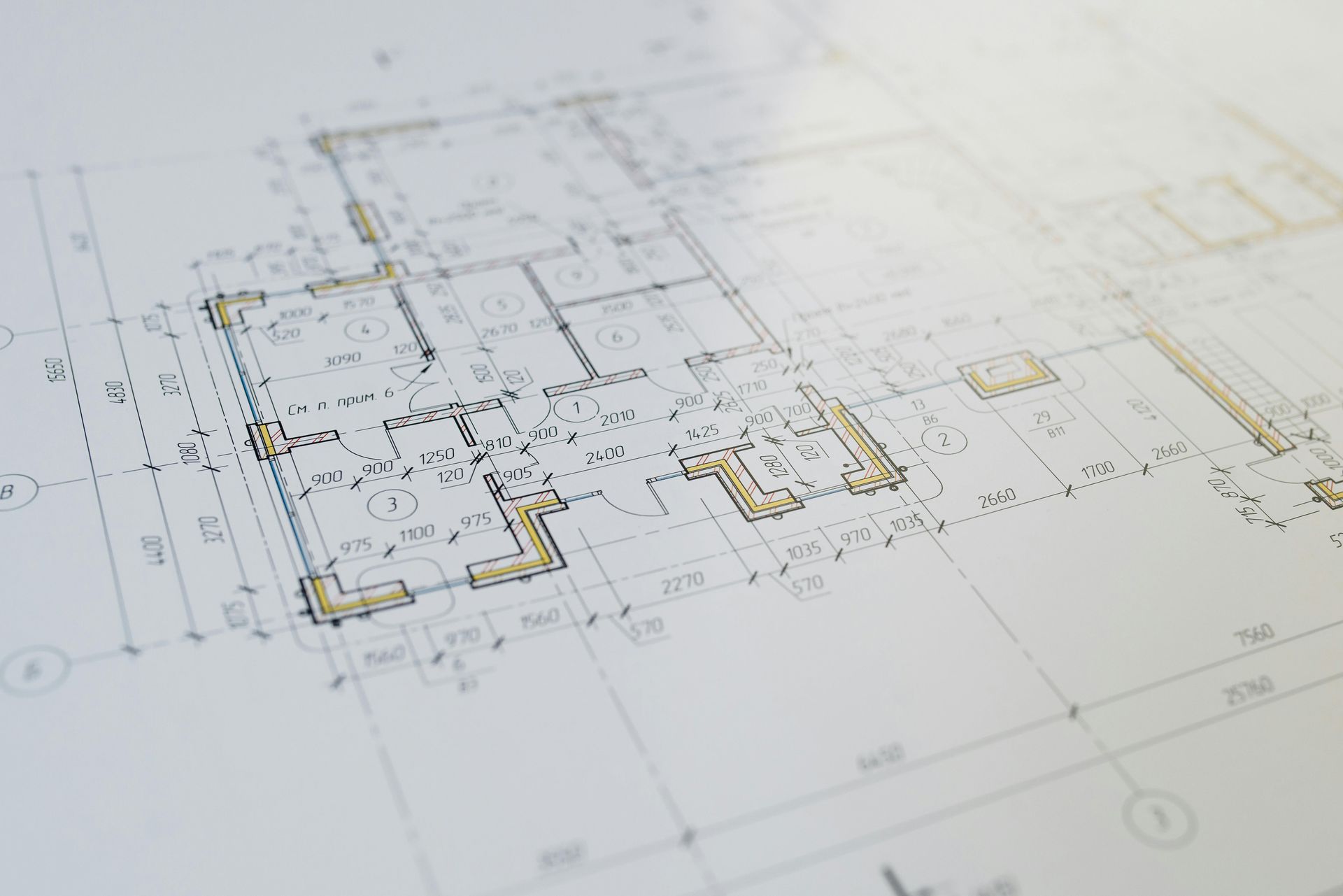Noise Control Solutions for MDUs: Creating Quieter Living Spaces
Noise control is one of the most important aspects of designing Multiple Dwelling Units (MDUs), especially in bustling urban environments where space is limited and sound carries easily. Excessive noise can reduce tenants’ comfort and privacy, impacting their satisfaction and even influencing their decision to renew leases. From soundproofing materials to design strategies, implementing effective noise control solutions can significantly improve the quality of life for residents. Here are key strategies to help builders and developers create quieter, more comfortable living spaces in MDUs.
Soundproofing Walls and Ceilings
Soundproofing walls and ceilings is a foundational approach to noise control, particularly for reducing sound transfer between adjacent units. Effective soundproofing involves using materials that absorb, block, or dampen sound, creating a quieter and more private environment for tenants.
- Insulated Wall Assemblies: Using insulated wall assemblies filled with sound-absorbing materials, such as mineral wool or fiberglass insulation, can reduce noise transmission. These materials trap sound waves and prevent them from passing through walls, making them ideal for walls shared between units.
- Double or Staggered Stud Walls: Double or staggered stud walls provide an additional barrier between units by separating the wall framing for each side. This construction method reduces the transmission of impact noise, as sound waves have to pass through two layers of studs, each insulated, making it harder for sound to travel between units.
- Acoustic Drywall: Acoustic drywall, or soundproof drywall, contains additional layers that enhance sound absorption. This material can be installed on walls and ceilings to further reduce sound transfer and improve overall acoustics in each unit.
- Decoupling Ceilings with Resilient Channels: Installing resilient channels between ceiling joists and drywall creates an additional layer that dampens sound. Resilient channels are designed to absorb sound vibrations, reducing the amount of noise transmitted between floors.
By combining these wall and ceiling soundproofing methods, MDUs can significantly reduce noise transfer between units, creating a more peaceful living experience for residents.
Flooring Solutions to Minimize Impact Noise
Impact noise, such as footsteps, moving furniture, and dropped items, can be a major source of disturbance in MDUs. Flooring solutions that absorb or dampen these sounds help maintain peace and quiet, especially in multi-floor buildings.
- Soundproof Underlayment: Installing soundproof underlayment beneath flooring materials like hardwood, tile, or laminate can help absorb impact noise. Rubber, cork, and foam underlayments are popular options, as they reduce both impact noise and airborne sound.
- Carpet and Carpet Tiles: Carpet is naturally sound-absorbent and effective in reducing both airborne and impact noise. For MDUs with a preference for hard flooring, carpet tiles in hallways or high-traffic areas provide sound control while maintaining a modern aesthetic.
- Engineered Flooring Options: Engineered flooring materials, such as vinyl planks or laminate with built-in soundproofing layers, can reduce noise transmission while offering durability and style. These options are particularly popular in MDUs for their low maintenance and sound-dampening qualities.
- Floating Floors: Floating floors, which are not directly attached to the subfloor, create an air gap that reduces sound transmission. Installing a floating floor over soundproof underlayment enhances noise control, making it an ideal choice for high-rise MDUs where impact noise is a common concern.
Choosing the right flooring and underlayment materials can minimize noise, ensuring that tenants on different floors are not disturbed by everyday activities above or below.
Noise-Reducing Windows and Doors
Windows and doors are key areas where noise can enter or escape. High-quality, noise-reducing windows and doors help insulate units from outdoor noise and limit sound transfer between units, increasing both privacy and comfort.
- Double- or Triple-Glazed Windows: Double- or triple-glazed windows have multiple layers of glass with air or gas-filled gaps between them, which act as sound barriers. These windows significantly reduce noise from outside, such as traffic, construction, or neighborhood activity, making them ideal for MDUs in busy areas.
- Soundproof Doors: Solid-core doors provide better sound insulation compared to hollow-core doors. Installing soundproof doors for unit entrances and interior rooms can help contain noise within units and prevent disturbances in shared hallways.
- Weatherstripping and Door Sweeps: Adding weatherstripping and door sweeps to entry doors creates a tight seal that blocks noise from entering or leaving a unit. These simple additions are cost-effective solutions for improving sound control without major renovations.
- Acoustic Window Inserts: For MDUs in especially noisy urban environments, acoustic window inserts can be added to existing windows to improve soundproofing. These inserts create an additional barrier against noise, effectively reducing outdoor disturbances for residents.
By choosing sound-insulating windows and doors, developers can create quieter, more private living spaces that cater to tenants’ desire for comfort and tranquility.
Soundproofing Shared Spaces and Hallways
Noise control in shared spaces and hallways is essential to maintaining a peaceful atmosphere in MDUs. These areas often experience high foot traffic and other noises that can easily travel into individual units.
- Acoustic Panels on Walls and Ceilings: Installing acoustic panels in hallways, lobbies, and common areas helps absorb sound and reduce echo, preventing noise from bouncing into nearby units. Acoustic panels come in a variety of styles and can be integrated into the design for both function and aesthetic appeal.
- Soft Flooring Options in Hallways: Using carpet or carpet tiles in hallways can reduce noise from footsteps, rolling luggage, and other sounds that are common in shared spaces. Carpeted hallways act as a sound barrier, preventing noises from reaching unit entry doors.
- Acoustic Ceiling Tiles: Acoustic ceiling tiles, often made from sound-absorbing materials like mineral fiber, can be installed in common areas to reduce noise levels. These tiles work well in larger shared spaces where sound can easily carry, creating a more peaceful environment for residents.
- Doors with Automatic Closers: Doors to shared areas, such as stairwells or laundry rooms, can create loud noises when they close. Installing automatic door closers with soft-close mechanisms reduces slamming sounds, ensuring that these spaces are quieter for nearby residents.
By addressing sound control in shared spaces, developers can prevent noise from spilling into individual units, helping tenants feel more at ease in their homes.
Strategic Unit Layout and Building Design
Thoughtful layout and building design are foundational elements of noise control. By strategically placing units, shared walls, and common areas, developers can minimize the spread of noise, enhancing privacy and comfort.
- Separating Living and Sleeping Areas: When designing unit layouts, placing living rooms and kitchens away from bedrooms—both within the unit and in relation to neighboring units—reduces the chance of noise disturbance. For instance, placing bedrooms adjacent to other bedrooms and living areas adjacent to other living areas minimizes noise conflicts between units.
- Isolating Noisy Common Areas: Positioning high-traffic or noise-prone areas, such as gyms, laundry rooms, or elevators, away from residential units helps reduce noise complaints. For example, placing these spaces on lower floors or in isolated wings can contain noise and prevent disturbances for residents.
- Staggered Unit Layouts: Staggered layouts, where units are not perfectly aligned floor-to-floor, can help disrupt sound pathways and reduce noise transfer. This design feature is particularly effective for multi-story MDUs, as it reduces sound conduction between floors and walls.
- Buffer Zones and Hallways: Creating buffer zones, such as storage closets or utility rooms, between units can prevent noise from easily traveling between shared walls. Wide hallways also act as natural sound barriers, separating units and reducing sound transmission.
By incorporating noise control into the initial design phase, developers can reduce the need for soundproofing retrofits and create a quieter, more pleasant environment for residents.
Educating Tenants on Noise Reduction Practices
Tenant awareness is an important aspect of maintaining a quiet living environment in MDUs. Educating tenants on noise reduction practices can help foster a considerate community and prevent unnecessary noise disturbances.
- Noise Policies and Quiet Hours: Establishing noise policies and quiet hours, typically in the late evening and early morning, encourages tenants to be mindful of their noise levels. These policies should be communicated clearly to all tenants and can be included in lease agreements to set expectations.
- Tips for Reducing Noise: Providing tenants with practical noise-reducing tips, such as using rugs, placing furniture against shared walls, or avoiding loud appliances at night, can help minimize noise within their units. Many tenants appreciate guidance on how to reduce their impact on neighbors’ comfort.
- Encouraging Dialogue: Encouraging open communication between tenants and property management can help resolve noise complaints before they become major issues. By establishing a clear channel for noise-related feedback, management can address concerns proactively and create a more harmonious community.
Educating tenants on noise etiquette and creating a culture of respect can go a long way in maintaining a peaceful environment in MDUs.
Building a Peaceful Environment with Effective Noise Control
Noise control is a vital aspect of MDU design, impacting residents’ comfort, privacy, and satisfaction. By incorporating soundproofing materials, thoughtful design strategies, and educating tenants on noise reduction, developers can create MDUs that provide a quieter, more enjoyable living experience.
Effective noise control enhances tenant retention and makes the property more appealing in a competitive market. With the right noise reduction solutions, MDUs can offer residents a peaceful, private space in the heart of urban environments—making high-density living a more comfortable choice for everyone.









